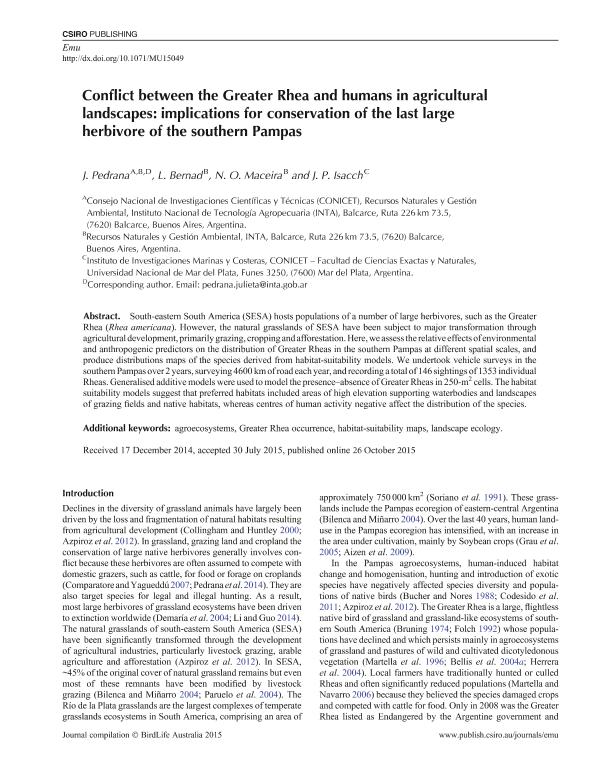Artículo
Conflict between the Greater Rhea and humans in agricultural landscapes: Implications for conservation of the last large herbivore of the southern Pampas
Fecha de publicación:
04/2015
Editorial:
Csiro Publishing
Revista:
Emu
ISSN:
0158-4197
Idioma:
Inglés
Tipo de recurso:
Artículo publicado
Clasificación temática:
Resumen
South-eastern South America (SESA) hosts populations of a number of large herbivores, such as the Greater Rhea (Rhea americana). However, the natural grasslands of SESA have been subject to major transformation through agricultural development, primarily grazing, cropping and afforestation. Here, we assess the relative effects of environmental and anthropogenic predictors on the distribution of Greater Rheas in the southern Pampas at different spatial scales, and produce distributions maps of the species derived from habitat-suitability models. We undertook vehicle surveys in the southern Pampas over 2 years, surveying 4600km of road each year, and recording a total of 146 sightings of 1353 individual Rheas. Generalised additive models were used to model the presence-absence of Greater Rheas in 250-m2 cells. The habitat suitability models suggest that preferred habitats included areas of high elevation supporting waterbodies and landscapes of grazing fields and native habitats, whereas centres of human activity negative affect the distribution of the species.
Archivos asociados
Licencia
Identificadores
Colecciones
Articulos(IIMYC)
Articulos de INSTITUTO DE INVESTIGACIONES MARINAS Y COSTERAS
Articulos de INSTITUTO DE INVESTIGACIONES MARINAS Y COSTERAS
Citación
Pedrana, Julieta; Bernad, Lucia; Maceira, Nestor Oscar; Isacch, Juan Pablo; Conflict between the Greater Rhea and humans in agricultural landscapes: Implications for conservation of the last large herbivore of the southern Pampas; Csiro Publishing; Emu; 115; 4; 4-2015; 335-344
Compartir
Altmétricas




